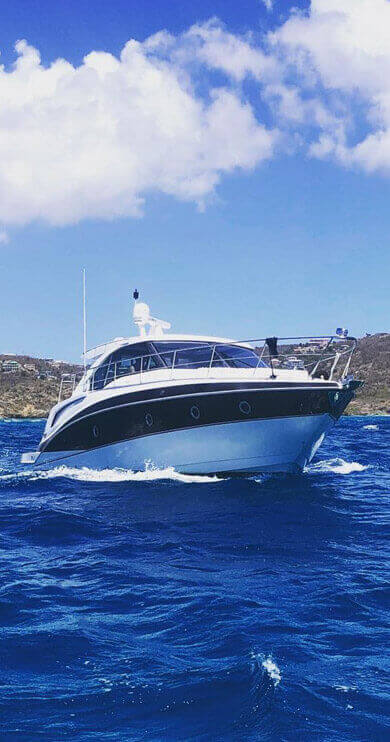Showing all 3 results
Best ground tackle to fulfill your need
Ground Tackle or Anchor Ground Tackle appears at the Gear that attaches your boat to the anchor. Ground tackle refers to each of the parts of an anchor bundle between the boat and the anchor. If you use only a line the ground handle may be known as just the anchor rode or line.
The scope is the ratio of anchor line to the water thickness. For example, it’s 10 feet deep and you pay out 30 ft of chain or line you’ve got a scope of 3 to 1. The catenary is a word that refers to the curve of the ground tackle. The larger the scope the greater the chance the pull will be horizontal.
Parts of Ground Tackle:
- The chain is employed for chafe protection and its own weight keeps the pull on the anchor flat.
- The anchor rode is a thing that connects your anchor to your boat. Without this anchor rode, your boat can experience a heavy loss. It is significantly an important part of your Ground tackle.
- Shackles have to be oversized and fastened with wire or wire ties as if it let loose your boat might swim away from the deck.
- Swivels utilized involving the anchor and string to allow the anchor to settle in the waters.
- The anchor Kellett is used to increasing the holding capacity of the boat anchor by pre-stressing the rode and adding more force into the downward direction onto the anchor rope which makes the anchor hold firmly.
You don’t need all these components, you might just have some line and tie it to the Anchor. However, the best systems will have many of those parts for the best holding.
All chain ground tackle:
All chain is a favorite on big boats, heavy displacement ships, big powerboats, and Mega Yachts. The two advantages of chains are weight and their holding capacity. The weight keeps the string on the seabed which keeps the tug the anchor close to horizontal. The downside to all chains is weight, as well as the absence of stretch.
The string is hefty and 100 ft of 3/8 inch series (10mm) will weigh 136 pounds. Stowing this up forward in a ship vastly increases the opportunity of pitching in waves. The second problem with all chains in the absence of stretch. This manifests itself in 2 manners.
First, in a swell and higher-end, the ship is drifting around the backbone. As the boat gets further away, the floor handle will load up and pull the ship back. This loading will transfer to the ship and the team will feel that the jarring. Just standing may be an issue because of this shock loading.
Here it is necessary to have an anchor snubber to soften the load. The next result in lack of stretch with all chains is anchoring in a ditch. Here the load from the boat is moved through the chain and also the forces moved to the anchor, maybe breaking it free. Again using a snubber will soften the load.
Types of Anchor Chain:
-
Proof Coil Chain:
Proof Coil Chain is constructed from low-carbon steel. It generally will have”G3″ thrown into every hyperlink. Its name comes from subjecting the string to tensile loads (its evidence load) until it breaks. Anchor chains’ working load rating is usually 50 percent of their evidence load.
-
BBB Chain:
BBB Chain also called a triple-B chain is also Grade-30 low-carbon steel. It can be identified from the”3B” throw into every hyperlink.
Anchor Chain Coatings:
Most anchor ground tackle chains are galvanized. Some anchor strings could be purchased with a thin polymer coating. Vinyl coatings are also used, making the series thicker, but gives more protection.
Stainless-steel anchor string is also available. This is 316 stainless and is more durable than the steel, galvanized counterparts, but less strong as a high-carbon HT galvanized string. It’s also considerably more expensive than any of those galvanized chains.
All Rode Ground Tackle:
All rode tackles are lighter, maybe thrown, take up less space, and stretch. The other hand is chafe. Unlike string rope stretches and this results in a smoother ride at anchor. Unlike with Chain, the load isn’t transferred to the anchor, and so the anchor is not affected.
Rode Lines Types:
Twisted three-strand nylon wrapped, has great stretch properties, it also sinks. For your Rode Line a nylon line is very robust and with the 3 strand construction has plenty of stretches. Polypropylene has great stretch tails but has an inferior shelf life in the sunlight. The three-strand line could absorb shock and the constant tugging related to anchoring much better than braided line.
Nylon Three-Strand lineup is the top choice for use as an anchoring line. Soft lines are generally thicker and more loosely woven, than moderate or hard lines for anchoring, as they’re more prone to unraveling and chafing. Moderate and hard lines would be best to handle chafe. Lines that have been treated with a wax-like coating can be found and will assist the line to resist water/salt absorption.
If you’re anchoring after the daytime, be sure to show your anchor light. Make sure the boat has adequate room to swing around your anchor if the direction of the wind changes.
Store your ground tackle and ground tackle marines where it’s visible. Buy the best Ground Tackle and Ground Tackle Marines from Harbor Shoppers.















